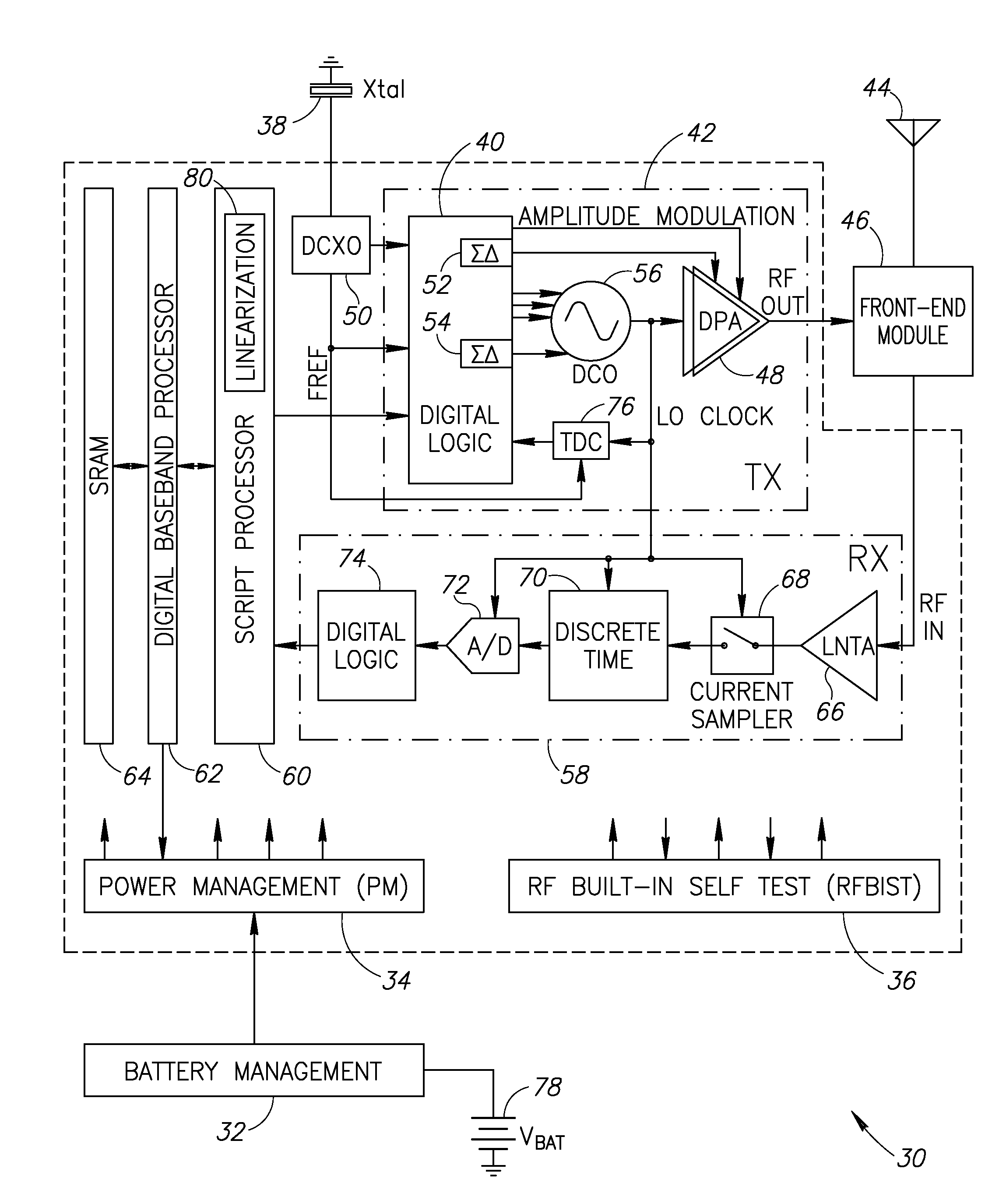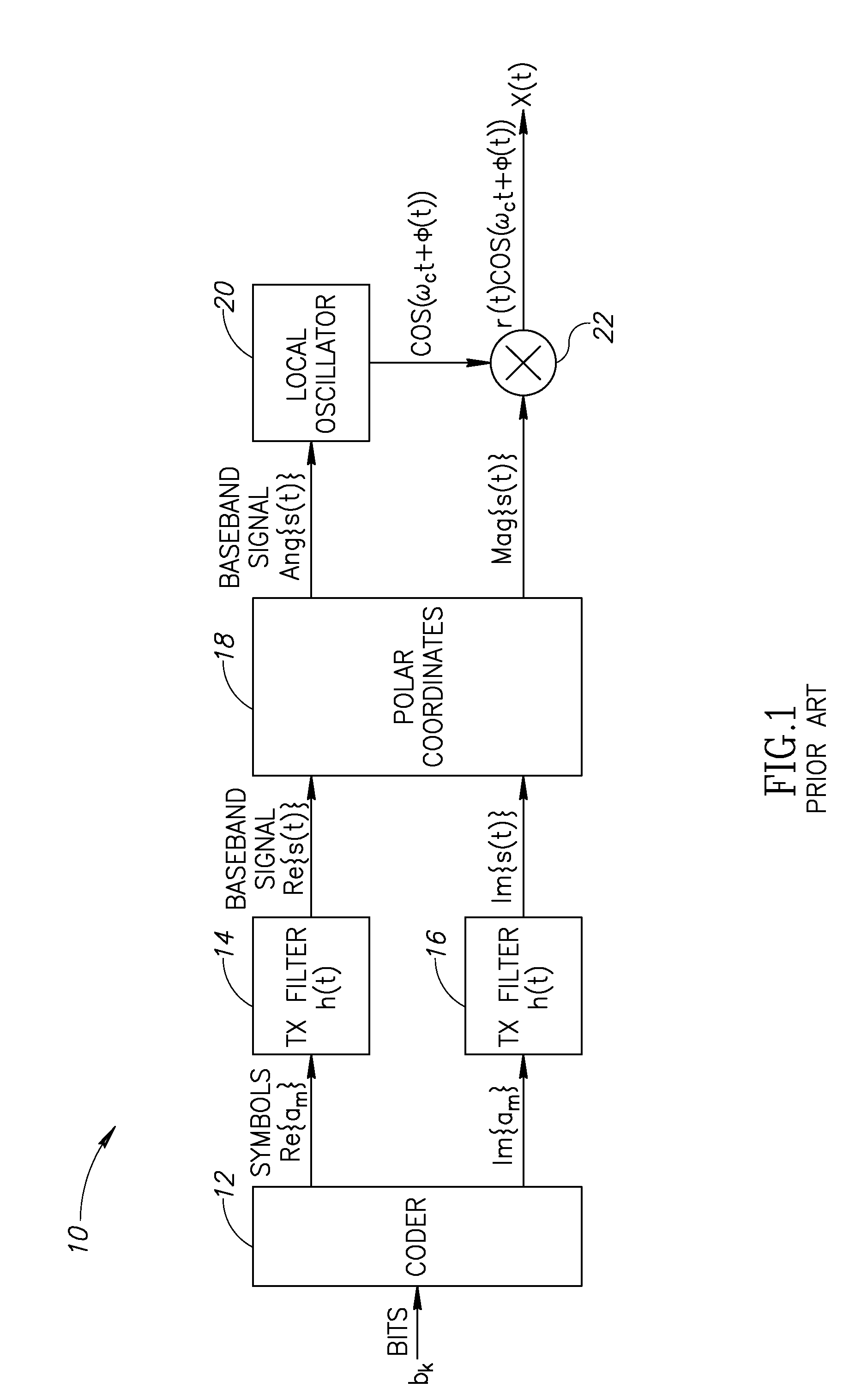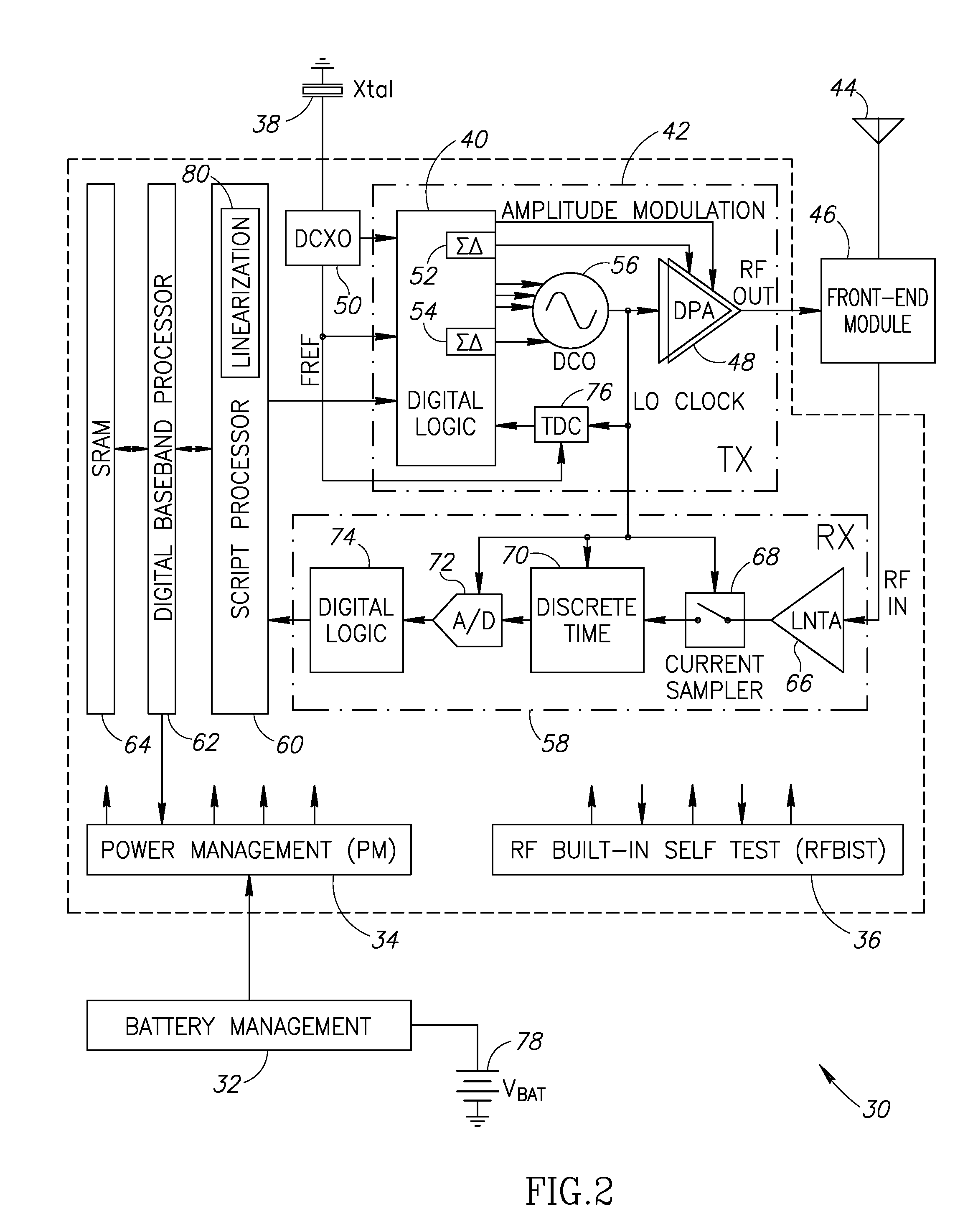Linearization of a transmit amplifier
- Summary
- Abstract
- Description
- Claims
- Application Information
AI Technical Summary
Benefits of technology
Problems solved by technology
Method used
Image
Examples
first embodiment
[0084]A block diagram illustrating the linearization mechanism of the present invention implemented in a DRP based GSM / EDGE polar transmitter is shown in FIG. 9. The example polar transmitter, generally referenced 190, comprises a transceiver circuit 200, front end module (FEM) 250, SAW filter 290, antenna 194, switcher / regulator 192, switched mode power supply (SMPS) or linear regulator 198 and battery 196. The transceiver comprises a script processor 202 (or other controller / processor device) incorporating program code means 204 for implementing the linearization mechanism of the present invention, CORDIC 228, splitter 206, multiplexers 208, 236, predistortion LUT 226, DCO 224, DPA 222, coupling capacitor 248, auxiliary low noise amplifier (LNA) / transconductance amplifier (TA) 246, low noise transconductance amplifier (LNTA) 244, switch 242, mixer 240, filters 238, 232, 212, ADC 234, gain block 230, DACs 210, 214, 216 and buffers 218, 220. 217. The FEM comprises capacitors 252, 25...
second embodiment
[0125]A diagram illustrating the linearization mechanism of the present invention implemented in a DRP based GSM / EDGE polar transmitter is shown in FIG. 14. The polar transmitter, generally referenced 300, comprises a transceiver circuit 302, PA module 304, SAW filter 308 and antenna 306. The transceiver comprises a script processor 318 (or other controller / processor device) incorporating program code means 316 for implementing the predistortion calibration mechanism of the present invention, pulse shaping filter 310, CORDIC and polar signal processing 312, ramp / gain normalizer 314, AM / AM and AM / PM predistortion LUT 322, AM / PM signal processing 324, local oscillator (LO) 326, DPA 328, coupling capacitor 329, auxiliary low noise amplifier (LNA) / transconductance amplifier (TA) 330, low noise transconductance amplifier (LNTA) 331, switch 332, mixer 334, filters 336, 340, multiplexer 338, ADC 339, gain block 341 and feedback CORDIC 320. The FEM comprises amplifiers 342, 344, signal coup...
PUM
 Login to View More
Login to View More Abstract
Description
Claims
Application Information
 Login to View More
Login to View More - R&D
- Intellectual Property
- Life Sciences
- Materials
- Tech Scout
- Unparalleled Data Quality
- Higher Quality Content
- 60% Fewer Hallucinations
Browse by: Latest US Patents, China's latest patents, Technical Efficacy Thesaurus, Application Domain, Technology Topic, Popular Technical Reports.
© 2025 PatSnap. All rights reserved.Legal|Privacy policy|Modern Slavery Act Transparency Statement|Sitemap|About US| Contact US: help@patsnap.com



